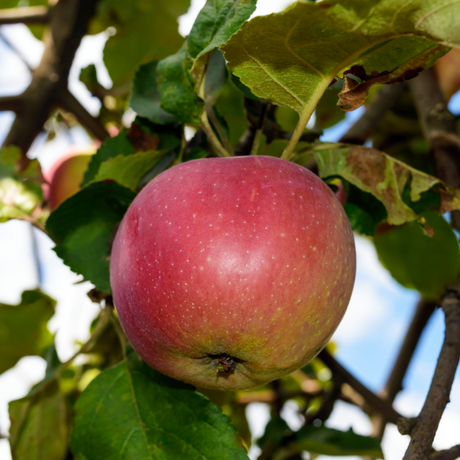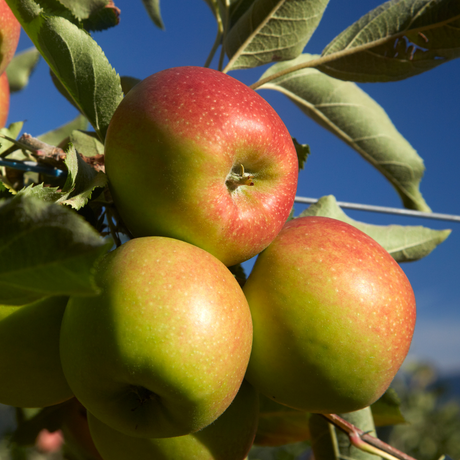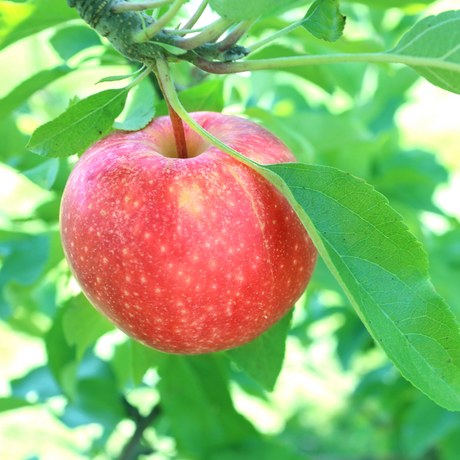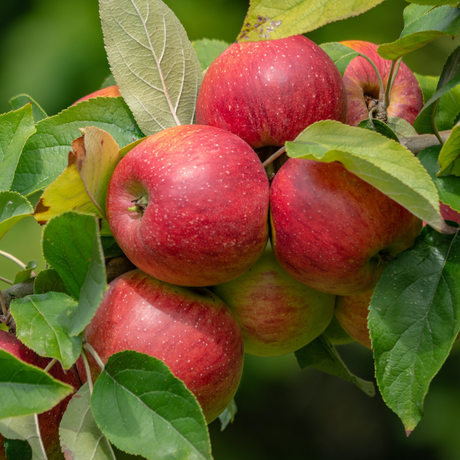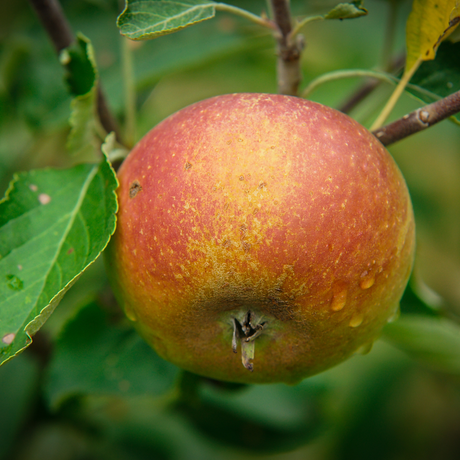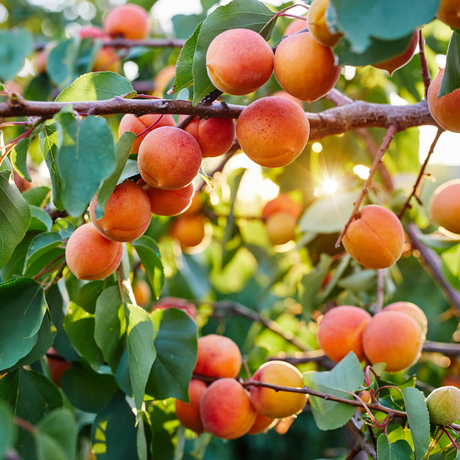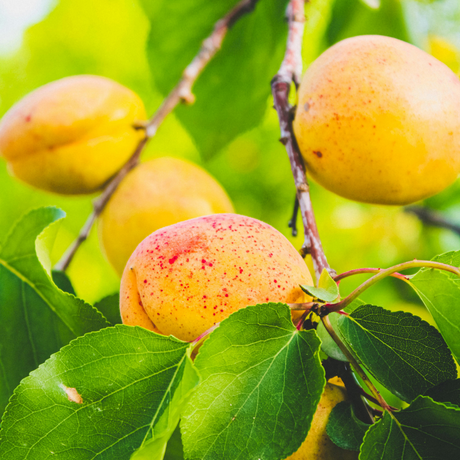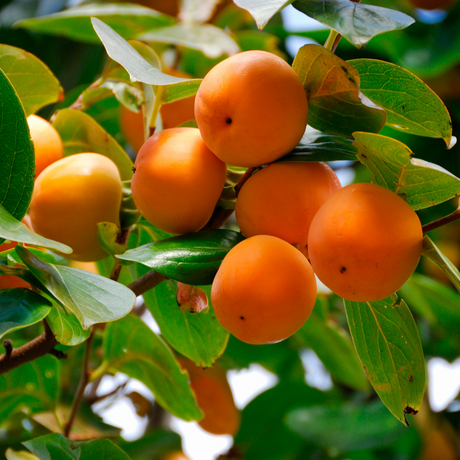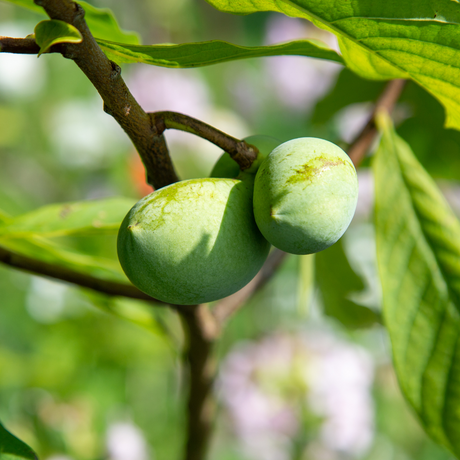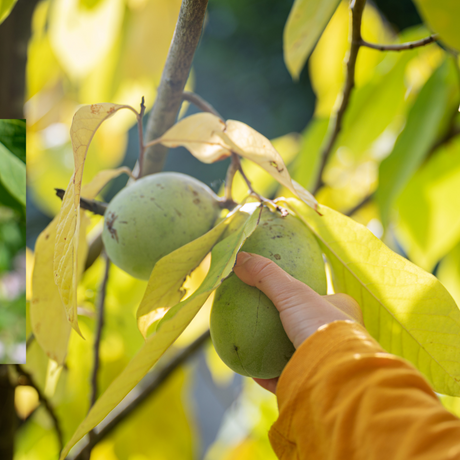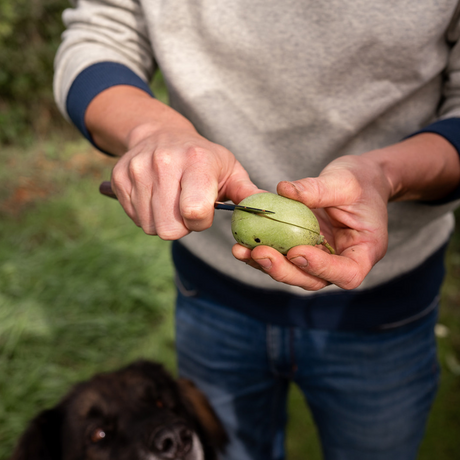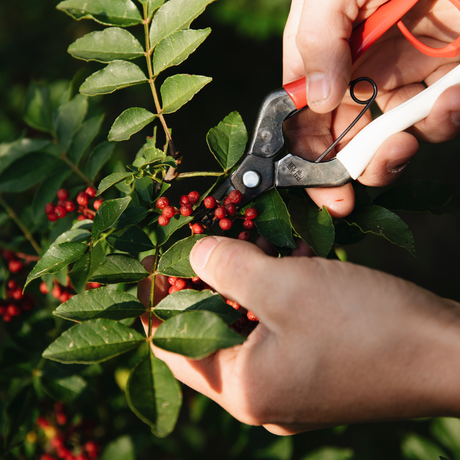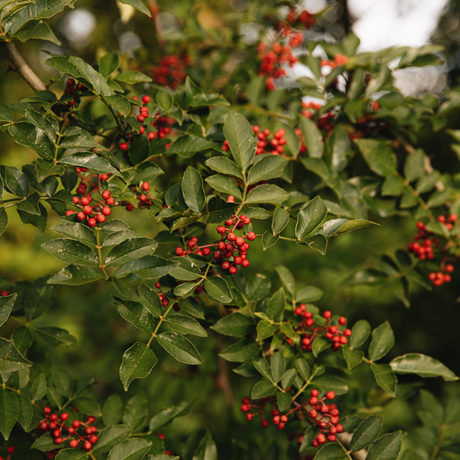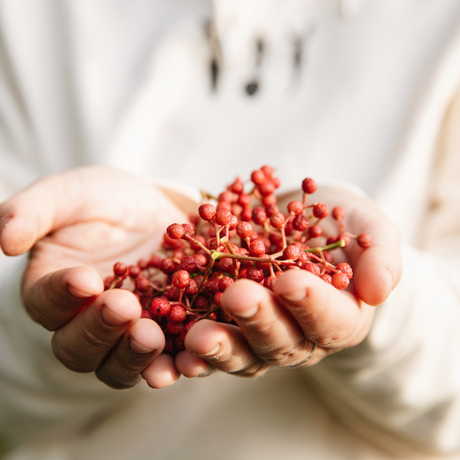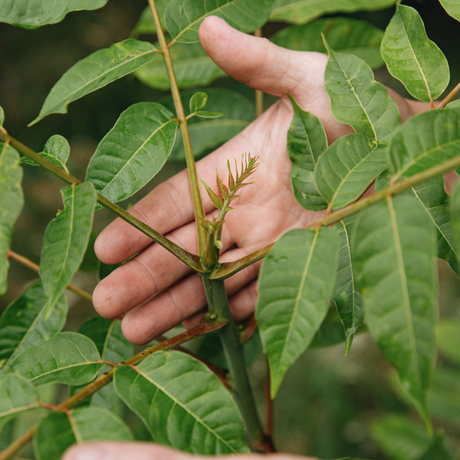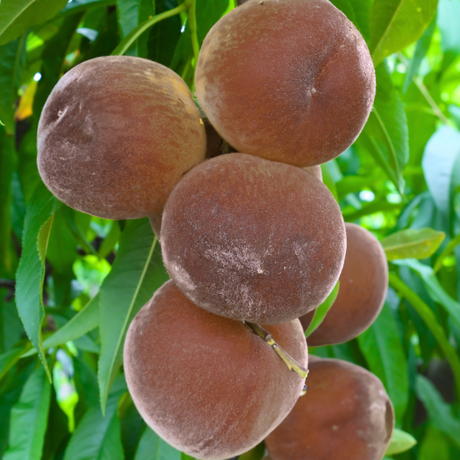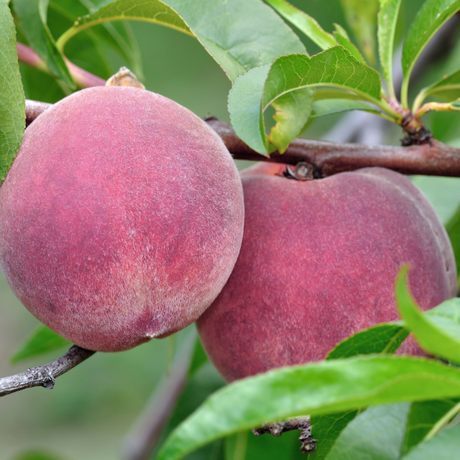Low-stem apple tree 'Elstar' BIO
€27,95Unit price /UnavailableLow-stem apple tree 'Jonagold' BIO
€27,95Unit price /UnavailableLow-stem apple tree 'Gala' BIO
€27,95Unit price /UnavailableLow-stem apple tree 'Rode Boskoop' BIO
€27,95Unit price /UnavailableLow-stem apple tree 'Cox's Orange Pippin' BIO
€27,95Unit price /Unavailable
Fruit trees in pictures
In this video, Ruud shows you how to plant a tree.

Also read our growing guide on choosing and planting fruit trees.
You may also like
View allBuying your own apple tree: fresh fruit and character in your garden
A half-standard apple tree is ideal for small and medium-sized gardens, as it offers a good balance between size and ease of maintenance. You can choose from various apple varieties depending on flavor and how you want to transform them into (usually) healthy food. The Elstar is a deliciously sweet eating apple, while the Red Boskoop makes the most delicious applesauce.
An apple tree is perfect for limited space, such as a balcony or small garden. Apple trees, regardless of size, have a graceful appearance and are a valuable addition to any garden. The blossoming of your apple tree in spring is also an incredibly beautiful sight.
Low-stem apple trees typically grow to 2 to 3 meters tall, making them ideal for smaller gardens. Plant an apple tree and soon taste the difference between supermarket fruit and truly freshly picked fruit.
An apple tree is one of those plants you can enjoy for years. In spring, it blooms beautifully, in summer it provides shade, and in autumn, you can pick your own apples. You can choose from young apple trees for rapid growth or an old apple tree for immediate results. There are many different types of apples, each with its own flavor and characteristics. Other nearby trees can help pollinate your apple tree, which benefits fruit production. Apple trees grow best in open ground, where they can develop well. Thanks to the wide selection of apple tree varieties, there's always a suitable tree for your situation. Whether you have a large garden or a small balcony, there's an apple tree that suits you. Mini apple trees are specially bred to grow in confined spaces, such as city gardens or patios.
Why choose an apple tree?
An apple tree is not only beautiful but also incredibly practical. You can harvest fruit from it, attract bees and birds, and bring life to your garden or patio. Moreover, a trained apple tree is ideal for small gardens and can be planted along a fence or wall. Trained apple trees are space-saving and decorative, making them perfect for planting against walls or fences, especially if you have limited space.
- You pick your own apples , full of flavor and vitamins
- You will enjoy it in every season , from blossom to autumn colours
- Children learn about harvesting and nature through play
- There are compact varieties that also fit on a balcony or patio
- With one tree you can have a harvest for years , without much work
Our favorite apple trees
At Plukkers, you'll find strong and flavorful apple trees for every situation. We offer various varieties of apple trees, each with unique characteristics such as flavor, shelf life, and pollination requirements. Here are a few of our top picks:
Elstar (low stem)
The Elstar is self-pollinating and produces apples with a sweet, refreshing flavor, ideal for apple pie or simply enjoyed fresh. Elstar is a popular apple variety for its flavor and versatility.
Gala (low stem)
Juicy, medium-sized apples that ripen early. The Gala apple tree is known for its sweet fruit. Perfect for families. All children love them.
Jonagold (low stem)
Large apples that you can eat fresh or processed. The Jonagold is known for its large yield, making it popular with both amateur gardeners and professional growers. Also delicious in applesauce.
Red Boskoop (low trunk)
The ultimate apple for sauce, pie, and juice. As an eating apple, it can be a bit tart and not quite crisp enough.
How to plant and care for your apple tree
An apple tree is easy to care for, especially if you plant it properly and place it in the right spot. When planting an apple tree, it's wise to use tree stakes to support it. Make sure the planted tree is firmly planted so it can root well. The planting hole for an apple tree should be approximately 25% larger than the root ball.
Planting time
It's best to plant in autumn or early spring, as long as there's no frost. The ideal time to plant an apple tree is between November and March. The right time to plant an apple tree is important for its future growth. Choose a location with well-drained soil to prevent root rot.
Location
Apple trees love sun and airy, nutrient-rich, well-draining soil. They grow best in open ground in a sunny location.
Pollination
Not all varieties are self-pollinating. Therefore, it's best to plant two different varieties together for a richer harvest. Non-self-pollinating apple trees require another nearby apple tree for pollination. Other trees and other apple trees in the area can improve pollination and yield. Self-pollinating apple trees benefit from cross-pollination and will produce a higher yield.
Pruning
Prune in winter to keep the crown open. This will encourage beautifully shaped branches and more fruit. Apple trees can be easily pruned by removing upward-growing branches. The goal is to create an open crown so the apples hang well on the tree. A well-pruned tree bears more fruit. Pruning apple trees in winter promotes the growth of new branches in spring. An apple tree is easy to maintain with the right pruning technique. Pruning is the most important way to keep an apple tree healthy.
Water and food
Provide extra water during dry spells. In spring, you can apply compost or organic fertilizer to promote healthy growth. A healthy tree ensures a better harvest. The best time to fertilize apple trees is in early spring, just before the tree blossoms.
Pollination of apple trees
Pollination is truly one of the most important things to consider if you want to pick delicious, crisp apples from your own garden. Did you know that not every apple tree can simply pollinate itself? Some apple trees, like the well-known Elstar or certain Malus domestica varieties, can manage perfectly well on their own and still produce fruit. But most apple trees really need a companion nearby to do their best work and give you those delicious apples you're hoping for.
When selecting and planting new apple trees, it's helpful to check beforehand whether your chosen tree is self-pollinating or not. For those trees that need help, make sure there's another apple tree nearby—preferably a different variety that blooms around the same time. This way, bees and other pollinators can happily fly back and forth with the pollen, and before you know it, you'll have a bountiful harvest of your own apples. Do you have a smaller garden? Then standard or espaliered apple trees are perfect—they don't take up much space but produce plenty of fruit when planted alongside another tree. In larger gardens, you can go all out with a mix of standard, half-standard, and standard apple trees for a beautifully varied harvest.
Where you plant your apple trees is just as important as choosing the right varieties. Give your apple tree a nice sunny spot in fertile soil, so the young tree can grow well and become strong. Regular watering and some organic fertilizer will ensure your tree stays healthy and continues to produce those delicious apples year after year. And don't forget pruning – by trimming your apple trees a little each year, you keep them healthy and encourage the growth of new branches and more fruit.
There are so many different types of apple trees, each with its own unique character and flavor – it's truly a joy to discover! Some old varieties aren't self-pollinating, while modern apple trees are often specifically selected because they are. By combining different varieties, you increase the chance of good pollination and a bountiful harvest. Whether you choose standard, half-standard, or standard apple trees, with the right care and a clever combination of different varieties, you can enjoy the tastiest apples from your own garden year after year.
When do you harvest apples?
Apples usually ripen from August to October, depending on the variety. Carefully pick the fruit from the tree; they taste best immediately after picking. Homegrown apples often have a fuller flavor than store-bought apples. Use them immediately or store them in a cool, dry place. Many varieties will keep for months if stored correctly.
- Use: fresh, in pies, salads or as applesauce
- Storage: cool, dark and dry – preferably in a cellar or shed
More than just fruit
An apple tree is more than just a source of apples. It's a piece of nature in your garden. You encourage biodiversity, enhance your outdoor space, and literally reap the rewards of your labor. Mature apple trees and old fruit trees often produce abundant fruit immediately, adding character to the garden. Apple trees are a versatile choice: they suit a variety of gardens and are suitable for a wide range of purposes. Besides producing fruit, apple trees can also have tall trunks, creating an impressive presence in larger gardens. Whether you choose a potted tree, a espalier against a wall, or a multi-variety orchard, you'll enjoy seeing your tree bear fruit every season.


